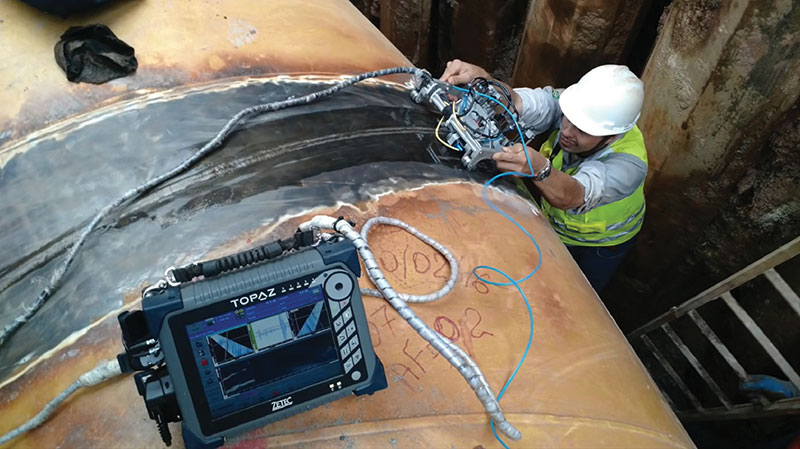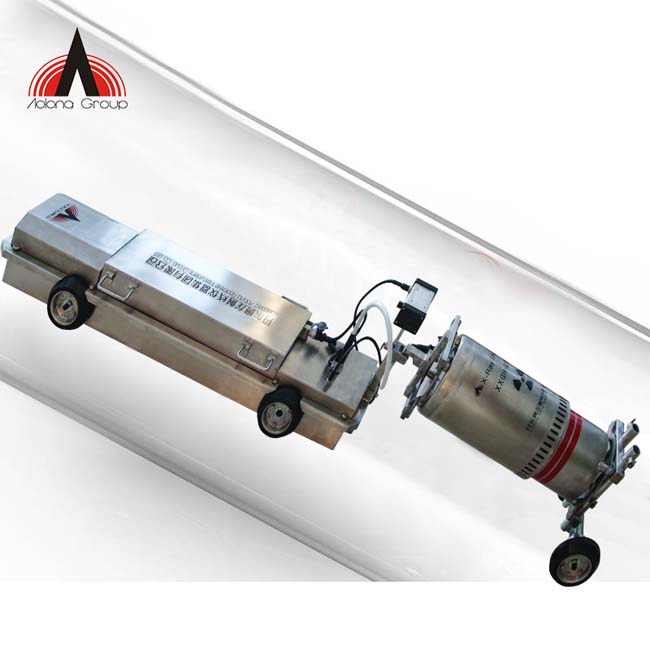Comprehensive Summary of Pipeline Welding Inspection Treatments
Pipe welding evaluation procedures play a critical function in guaranteeing that welded connections meet strict industry requirements and specifications. From meticulous pre-welding examinations to thorough post-weld analyses, a distinct examination process is important for preserving the architectural sturdiness of pipelines.
Pre-welding Evaluation Preparations
Prior to commencing the welding process, comprehensive pre-welding evaluation prep work are essential to guarantee the integrity and top quality of the weld joint. These preparations involve a careful evaluation of the products to be bonded, the welding equipment, and the job environment. First of all, the materials should be checked for any kind of flaws, impurities, or disparities that could compromise the weld. This consists of monitoring for correct product grades, measurements, and surface area problems. Pipeline Welding Inspection. Additionally, the welding devices needs to be examined to validate that it remains in great working problem, adjusted correctly, and suitable for the certain welding process. Any kind of issues with the devices ought to be attended to immediately to stop defects in the weld. The job setting need to be examined for tidiness, correct ventilation, and safety measures to ensure a conducive setting for the welding operation. By conducting detailed pre-welding assessment preparations, prospective problems can be identified and dealt with early, resulting in high-quality and trustworthy weld joints.
Welding Treatment Certification
Extensive pre-welding evaluation prep work lay the foundation for the important procedure of Welding Procedure Credentials, making sure the integrity and high quality of the weld joint. Welding Treatment Credentials (WPQ) is an essential action in the welding procedure that includes testing and accrediting welding procedures to guarantee they satisfy certain standards and needs. The WPQ process generally consists of welding treatment requirements development, welding treatment credentials testing, and documentation of the outcomes.
Throughout welding procedure specification advancement, vital details such as the welding process, welding materials, joint style, and welding parameters are specified to develop a detailed procedure. Ultimately, welding treatment qualification screening is performed to confirm the proposed treatment's integrity. This screening often involves welding examination vouchers that go through various mechanical and non-destructive examinations to evaluate the weld's quality and adherence to the specified criteria.
In-process Weld Evaluation
Throughout the welding process, in-process weld evaluation plays a critical function in making certain the quality and integrity of the weld joint - Pipeline Welding Inspection. This sort of inspection involves checking the welding parameters, evaluating the weld grain formation, and detecting any possible defects or stoppages as they occur. By performing in-process weld assessments, welding operators can without delay attend to any kind of problems that might occur, therefore guaranteeing and protecting against further defects that the last weld meets the called for specs
Usual techniques made use of for in-process weld assessment include visual evaluation, fluid penetrant screening, magnetic fragment testing, ultrasonic screening, and radiographic screening. In general, in-process weld evaluation is necessary for maintaining the top quality and dependability of welded pipes.
Non-destructive Testing (NDT)
Non-destructive Screening (NDT) is a critical technique employed in pipeline welding examination to analyze the stability of weld joints without causing damages to the bonded structure. her latest blog By utilizing numerous NDT methods, inspectors can examine the high quality of welds and recognize any type of flaws or gaps that might compromise the structural strength of the pipeline. Usual NDT methods used in pipe welding inspection include Radiographic Screening (RT), Ultrasonic Screening (UT), Magnetic Bit Checking (MPT), Fluid Penetrant Screening (LPT), and Visual Testing (VT)
RT includes using X-rays or gamma rays to produce photos of the interior framework of the weld, enabling inspectors to detect problems such as porosity, cracks, or insufficient fusion. UT utilizes high-frequency audio waves to detect problems beneath the surface of the weld, providing thorough details concerning the dimension and place of issues. MPT and LPT are used to determine surface-breaking problems by applying magnetic fragments or penetrant fluids to the weld area. Furthermore, VT includes visual evaluation of welds to determine any noticeable blemishes.
Post-weld Examination and Paperwork


Paperwork of post-weld evaluation searchings for is crucial for keeping quality assurance documents and ensuring compliance with industry requirements and regulations. Detailed records need to consist of details regarding the inspection techniques used, the location and nature of any type of defects located, and any rehabilitative activities taken - Pipeline Welding Inspection. Proper paperwork not just functions as a document of the weld's quality however likewise help in future maintenance and evaluation procedures
Verdict

In conclusion, pipe welding examination treatments play an important function in making sure the top quality and integrity of welds. Generally, adherence to browse this site appropriate evaluation procedures is essential to the success of pipe welding projects.
From meticulous pre-welding evaluations to detailed post-weld analyses, a well-defined examination procedure is vital for keeping the structural soundness of pipelines. By carrying out in-process weld inspections, welding operators can quickly resolve any problems that may develop, thus making sure and stopping more issues that the last weld meets the needed requirements.
Typical techniques made use of for in-process weld examination include visual evaluation, fluid penetrant screening, magnetic bit screening, ultrasonic testing, and radiographic screening.Non-destructive Testing (NDT) is an important approach employed in pipeline welding inspection to examine the honesty of weld joints without causing damages to the welded structure. Post-weld examination entails various methods to assess the welds for flaws, including aesthetic examination, color penetrant screening, magnetic particle click here for more testing, ultrasonic testing, and radiographic screening.